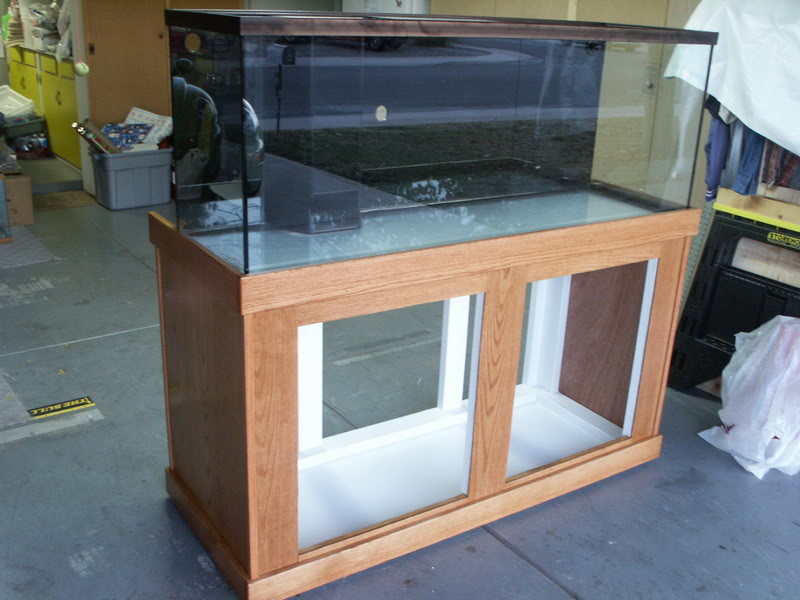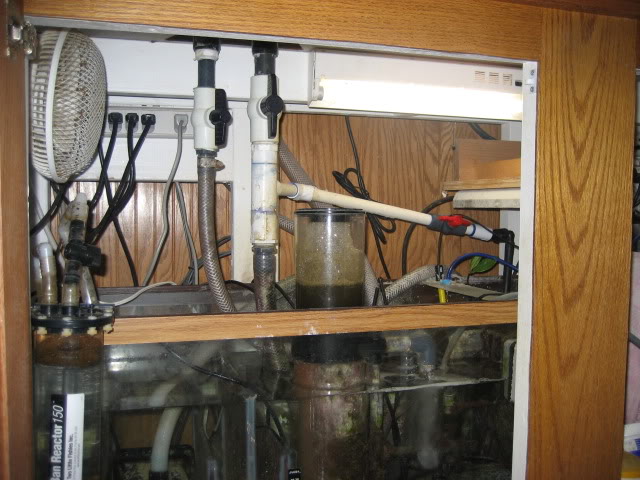Bulkhead tips:
1. Always install bulkheads clean and dry, no silicone, teflon or thread lubricants. Silicone and lubricants cause the gasket to scoot out or not seal properly. Have you ever removed an old automobile windshield or other gasketed glass? The rubber vulcanizes to the glass with time and creates a perfect seal without any help.
2. Before installing the bulkhead take a few minutes using a jewelers file, nail file or pocket knife and clean any excess flashing off both the male and female threads and from the flat gasket mating surfaces of the flange and nut. This is a common source of leaks.
3. Always install the gasket on the flange side of the bulkhead, never on the nut side, regardless if its inside or outside the tank. Installing the gasket next to the nut will lead to leaks as water travels along the threads around the gasket. Hand tighten only with maybe 1/4 to 1/2 turn additional, no more.
4. When using threaded bulkheads, again clean the excess flashing from the threads and valleys and use a stick or crayon type of thread lubricant designed specifically for PVC treads. These can be found at Lowes, HD, Ace and all hardware stores under names like Laco, Permatex and others.
I use this one and have since the 1980's with great success.
LA-CO: Product Detail - PLASTO-JOINT STIK® - Plastic Thread Sealant
It stays pliable forever and does not tear or roll out of the threads like teflon tape. My swimming pool plumbing up to 2" was all installed with this in 1983, outside in Phoenix AZ and its still pliable to this day!
Teflon tape was never designed to be used with PVC. Read this article by LASCO, one of the largest PVC fitting manufacturers in the world:
Assembling Threaded Plastic Fittings
5. Never support any pumps or piping from a bulkhead, always use supports so weight is not on a bulkhead and gasket causing differential stresses on the mating surfaces and leaks.
6. Never screw anything to the external threads of a bulkhead, these are not standard tapered pipe threads (NPT) and will leak. They are there to screw the nut on is all and are not normally even a standard diameter like 1" etc.
Hope you get some use out of this.

1. Always install bulkheads clean and dry, no silicone, teflon or thread lubricants. Silicone and lubricants cause the gasket to scoot out or not seal properly. Have you ever removed an old automobile windshield or other gasketed glass? The rubber vulcanizes to the glass with time and creates a perfect seal without any help.
2. Before installing the bulkhead take a few minutes using a jewelers file, nail file or pocket knife and clean any excess flashing off both the male and female threads and from the flat gasket mating surfaces of the flange and nut. This is a common source of leaks.
3. Always install the gasket on the flange side of the bulkhead, never on the nut side, regardless if its inside or outside the tank. Installing the gasket next to the nut will lead to leaks as water travels along the threads around the gasket. Hand tighten only with maybe 1/4 to 1/2 turn additional, no more.
4. When using threaded bulkheads, again clean the excess flashing from the threads and valleys and use a stick or crayon type of thread lubricant designed specifically for PVC treads. These can be found at Lowes, HD, Ace and all hardware stores under names like Laco, Permatex and others.
I use this one and have since the 1980's with great success.
LA-CO: Product Detail - PLASTO-JOINT STIK® - Plastic Thread Sealant
It stays pliable forever and does not tear or roll out of the threads like teflon tape. My swimming pool plumbing up to 2" was all installed with this in 1983, outside in Phoenix AZ and its still pliable to this day!
Teflon tape was never designed to be used with PVC. Read this article by LASCO, one of the largest PVC fitting manufacturers in the world:
Assembling Threaded Plastic Fittings
5. Never support any pumps or piping from a bulkhead, always use supports so weight is not on a bulkhead and gasket causing differential stresses on the mating surfaces and leaks.
6. Never screw anything to the external threads of a bulkhead, these are not standard tapered pipe threads (NPT) and will leak. They are there to screw the nut on is all and are not normally even a standard diameter like 1" etc.
Hope you get some use out of this.
Last edited by a moderator:




















